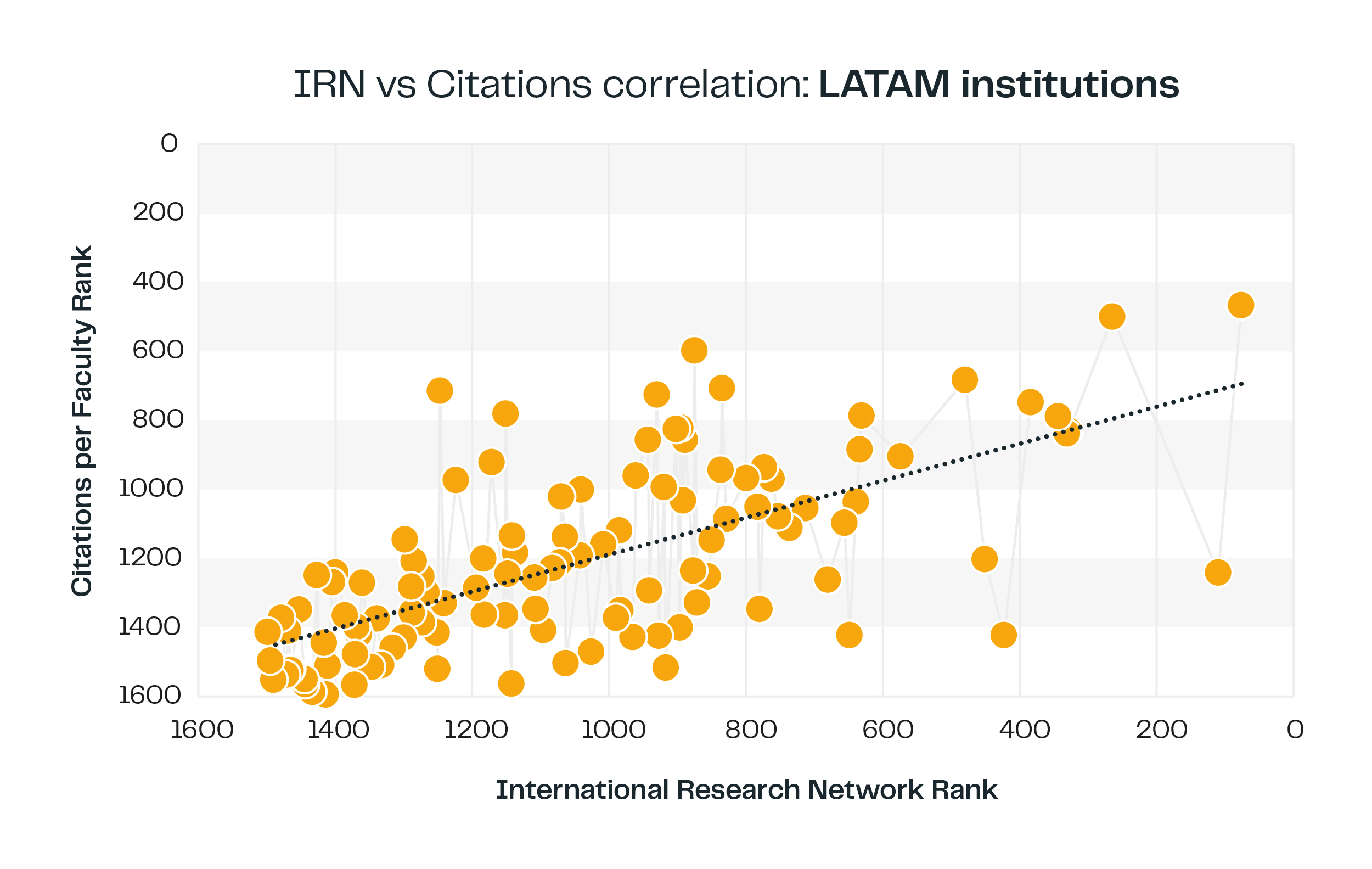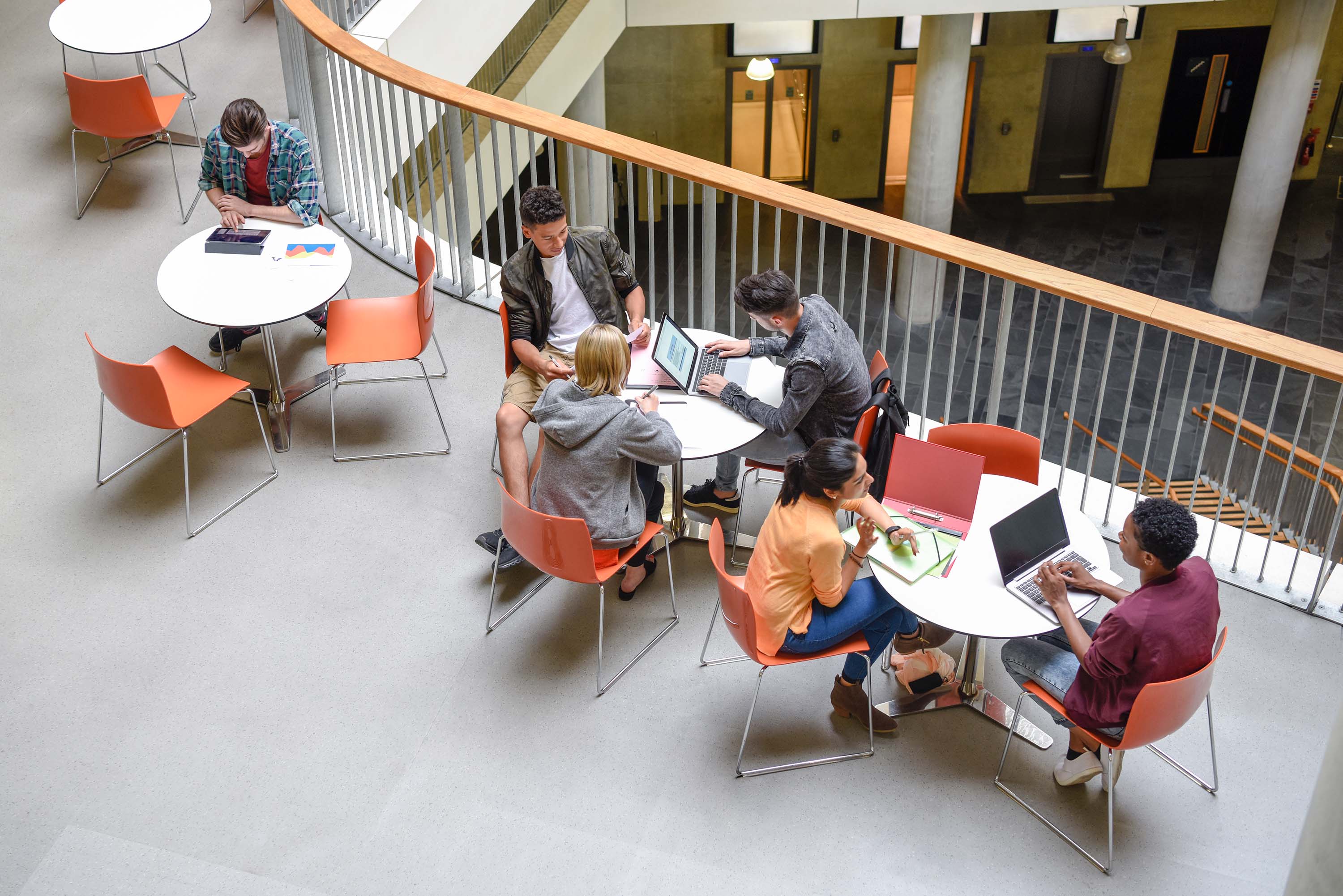In brief:
- Collaboration and international partnerships lead to an increase in research, student recruitment and funding opportunities.
- Partnerships with the corporate sector can lead to better alignment between the needs of employers and the curriculum and, therefore, better employment outcomes for graduates.
- Universities need to give their students a global education which can be applied internationally but should also allow them to learn about the sectors and economy within their own country. International partnerships can help them achieve a balance between the two.
- Collaborative research and knowledge networks lead to Latin American universities having a better international reputation.
- Collaborative approaches can lead to more progress in addressing the Sustainable Development Goals.
At the QS Higher Ed Summit: Americas 2025, experts joined us to “explore the power of collaboration in shaping higher education across the Americas” and discuss how universities in Latin America can enhance their outreach, make use of partnerships and improve student recruitment.
Speakers:
- Dante Cid, Vice President of institutional relations in Latin America at Elsevier (Moderator)
- Tamara Vinacur, Senior Education Specialist at Interamericano Development Bank (IDB)
- Dr. Jeannette Cecilia Tantaleán Rodríguez, Professor and Rector at Universidad César Vallejo
- Gabriel Foglia, Dean of the Business School at Universidad de Palermo
Value of academic partnerships in Latin America
“There is a strong correlation between the research which results from collaboration with international partners and more citations, which is one of the metrics for measuring the relevance of research. There are even more citations when collaborating with the private sector,” Dante Cid outlined in his opening statement.

Research was not the only area which had benefitted from international partnerships. Tamara Vinacur agreed that these public and private sector collaborations are also essential in making sure that students have the right support to pursue higher education; IDB aims to address this challenge as part of their mission to help governments with socioeconomic development which includes the promotion of higher education. While Vinacur said that aid schemes are an example of good partnership, and are enabling students to study, there is also more work that can be done. Other expenses such as transport and housing are often neglected, creating barriers for students from underprivileged backgrounds. This could be a result of limited spending on higher education in Latin American countries as “in Latin America and the Caribbean, spending in higher education as a percentage of GDP was 3.8% in 2022 whereas in other countries it was 5%,” Vinacur said.
The role of technology in strengthening university partnerships
When discussing solutions to this issue, Vinacur highlighted the opportunities offered by technology innovation companies: “We know that there is a growing prominence of corporate foundations, technology for companies, and sector changes. Technology is, not only in terms of providing resources to improve management systems and credentials, also part of this conversation; supporting the redesign of strategies to support the whole trajectory of students in higher education.”
Jeannette Cecilia Tantaleán Rodríguez added, “in today’s context, universities cannot remain isolated, so the collaboration in public and private partnerships is very important. And the role of technology too -the relationship is essential to innovation, and to improve academic relevance to generate inclusive employability.” She highlighted the work of Universidad César Vallejo and their approach of working in “open innovation ecosystems”: “Our students and faculty collaborate with different companies in projects on technology transfer, circular economy and corporate social responsibility.” She emphasised that these ecosystems have been valuable in providing solutions for local challenges such as community recycling and the digitalisation of small businesses.
Building corporate partnerships to boost employability
The panel discussed the importance of aligning the skills taught at universities with the business sector to ensure that students are as prepared as possible for their graduate careers. “Making your institution closer to the corporate sector will also help reduce the gap that we just heard about. Some of the private sector will complain that some of the students arrive without proper adaptation for business itself,” Cid suggested.
Gabriel Foglia spoke about the need to align with business needs locally and internationally. He talked about the several elements that help to achieve this balance and produce graduates who are fully prepared for the world of work. Firstly, effective international partnerships mean that students have the opportunity to learn about local and global economies, and business cultures within different countries.
Balancing global and local partnerships in higher education
Cid agreed that “the university needs to prepare the students to be global but there is also an increasing demand to fulfil the needs of the surrounding society and to engage with local business as a sector. So, it is a big challenge to ‘teach global’ but without losing focus on the local.”
Vinacur cited the Petroleum Engineering programme at the University of Buenos Aires as a great example of a programme that was focused on global education while still fulfilling the needs of the global economy. However, she commented that an area which has room for improvement, in her experience, is the international exchange programmes where students spend a year or a semester abroad. She wanted to make sure that these programmes were not just offering students an opportunity to live abroad but also learn something valuable about the local economy and local industries and have a more global perspective.
Strengthening international academic networks and global funding
The conversation moved on to government funding and policies related to higher education. The panel discussed the lack of funding as a hinderance to the development of universities in Latin America, but it also opens the door to consider global funding opportunities which has the added benefit of internationalisation, something which is seen favourably by the academic community. Rodríguez acknowledged that these global opportunities are invaluable, not just for their financial benefits but also the opportunities that they gave students and faculty to become a collaborative partner in the international academic community. “Alliance is a strategic necessity. So, we develop agreements which give more opportunities to our students and faculty and also the staff with different companies and institutions in Latin America and in Europe. This has allowed our students and faculty to join global knowledge networks.” These knowledge networks and working in an international community is a vital step to providing students in Latin America with a more global education. It is through international partnerships that this can be achieved.
Institutional partnerships and research collaboration
When asked about how universities should select collaborators and potential partners, Foglia highlighted the importance of in-person relationships. “We work through people. These are institutional agreements, but in the end, its people. We use a network. We’ve had an agreement with [New York University] for the last 25-years, so we send our MBA students to NYU, and we receive the NYU students in Argentina where they try to understand our country.” He emphasised that this needs to be a reciprocal process in order to be successful. Universidad de Palermo wants to receive students from other countries to teach them about Argentina and the Latin American region as well as sending their students for new experiences abroad.
Rodríguez added that this collaboration is particularly important in the research community as universities need to have access to global networks to effectively share knowledge and engage with existing and emerging projects. “There needs to be a strategy which connects quality. For Universidad César Vallejo, internationalisation does not only mean mobility but rather becoming part of global networks. We enable our students to integrate into international ecosystems where quality is measured against global standards.”
How partnerships drive student mobility in Latin America
As Rodríguez mentioned, international networks lead to an overall increase in student mobility. When discussing the trends of international student mobility in Latin America, Vinacur said, “if you consider data available, you can see that the proportion of mobile students has risen in all countries from 2013 to 2022. However, Latin American countries are the ones with a lower percentage of students who are international. You have only 1.3% of students in Latin America who are international/ mobile while in Eastern Asia there are 2.2% and in Central Asia 14.4% so we have a huge way to go in that sense.”
Delivering value to students through collaborative learning
Despite the challenges that the region is facing, the panel discussed how these difficulties can also be interpreted as an opportunity for growth. “If we want our students to be forward thinking and flexible, we need to be that first. We cannot demand that of our students if we do not lead by example,” Foglia said. He emphasised the importance of connection throughout higher education: students, faculty, employers, partners and other institutions and academics, and how these connections allow universities to create an experience for their students that goes beyond information that they could find online or receive from AI. He argued that universities need to be collaborative and adaptive in order to provide real value.
Partnerships for sustainability and social impact
Finally, Cid turned the conversation to the Sustainable Development Goals and how partnerships can help a university move closer towards these goals. “At Universidad César Vallejo, we have learned that the quality of a partnership depends on three principles: relevance, suitability and the measurement of results.” Jeannette Cecilia Tantaleán Rodríguez noted. “Only this way can we really achieve effective partnerships for sustainable development and to consolidate universities as guarantors of quality, equity and social transformation.”
The long-term impact of academic partnerships in Latin America
To conclude the panel, Cid asked the guest speakers for their final comments. Rodríguez started by emphasising the importance of diversity within universities and how each campus has a responsibility to offer a global education while also highlighting the importance of campuses reflecting local interests. Foglia agreed, claiming that “being non-global is not an option. For each institution, it is mandatory or you won’t know what’s going on in the industry. It’s the same with the use of technology. Developing soft skills and the human side of any subject that you are teaching is as important as the content. Also building networks. We only learn by working with people and working together.”
The Partners of Influence panel discussion portrayed university partnerships, both with international institutions and with companies such as IDB, as essential to the development of the higher education sector in Latin America. The sector currently faces many challenges, but these international partnerships open the door to improvement and participation in the wider academic community.









.jpeg)









